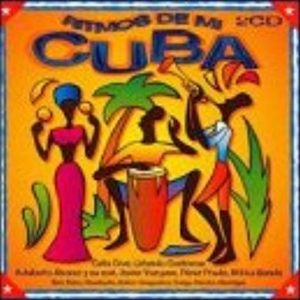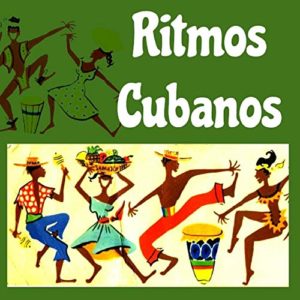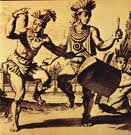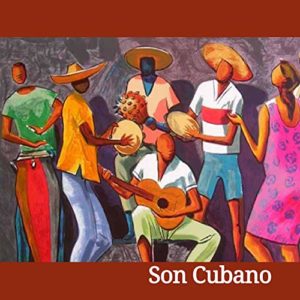
RITMOS MUSICALES ORIGINALES DE MI CUBA. VIDEOS.
Areíto: Manifestación musical de los aborígenes cubanos. No se disponen de referencias sobre su música, pues ninguna de sus ritmos ni cantos fueron recogidos por los conquistadores, más preocupados por esclavizar y recoger el inexistente oro de nuestra tierra. El areito no solo tenía un carácter bailable, sino también religioso y guerrero. El extermino en masa de los indocubanos arrancó de raíz las tradiciones musicales de nuestros aborígenes.
El Son: “El Son es lo mas sublime, para el alma divertir”…dijo un gran sonero, y nosotros agregamos que en este cubanísimo género musical confluyen elementos procedentes de la música española y africana. Para interpretar su música se requiere una amplia gama de elementos musicales. Su origen hay que buscarlo por los finales del siglo XIX, por varias ciudades de la región oriental como Guantánamo, Baracoa y Manzanillo donde la letra de un Son aseguraba que era la ciudad donde “se baila el Son en calzoncillo y camisón”.
Vemos cómo el Son se desdobla musicalmente y así encontramos el bolero-son, la guajira-son, la guaracha-son, y un día escucharemos hasta el reguetón-son, por aquello de la fusión y espero que no haya confusión. Muchos otros ritmos tienen su origen en el son, así tenemos el Sucu-Sucu, la Salsa, el Danzón y los que faltan.
El changüí: La simpática palabra changüí significa “baile”, “saltar de alegría”. Es una variante del son, que nació en la región de Guantánamo, donde aun se mantiene la tradición.
Este ritmo se extendió por toda Cuba cuando el timbalero Elio Revé en 1955 fundó una charanga, que dio vida al contagioso ritmo. “Pastorita tiene Guararey” puso a bailar a muchos bailadores cubanos.. Actualmente Elito Revé, mantiene vigente la tradición con su alegre charangón y “la Casa del Changüí”en Guantánamo pone alegría, e historia al tradicional un ritmo que se niega a morir.
Sucu-sucu: Ritmo pariente del Son, y que tuvo su origen y vigencia en Isla de la Juventud. Sus instrumentos básicos son guitarra, tres, bongó, machete y maracas. Los textos de sus canciones, se corresponden con los sones antiguos de la región oriental, de la década del 20 del siglo pasado.
El músico cubano Eliseo Grenet fue quien “descubrió” para Cuba y para el mundo, este alegre ritmo, al componer varios susu-sucu, siendo los llamados “Felipe Blanco” y “Domingo Pantoja”, los más famosos de todos. Así que si se llega por Isla de la Juventud no se olvide buscar un lugar donde haya un guateque con el ritmo Sucu-Sucu para que lo disfrute en vivo, en directo y en colores y si le brindan un Pinerito descubrirá un trago maravilloso que mezclado con el Sucu-Suco, le hará olvidar las penas del alma….del alma-naque, mi viejo.
 ORIGINAL RHYTHMS OF CUBA. VIDEOS.
ORIGINAL RHYTHMS OF CUBA. VIDEOS.
Areíto : Musical manifestation of the Cuban aborigines. There are no references on his music since none of his rhythms or songs were collected by the conquerors, more concerned with enslaving and collecting the nonexistent gold from our land. The areito not only had a danceable character, but also religious and warrior. The mass extermination of the indocubans uprooted the musical traditions of our aborigines.
The Son : “The Son is the most sublime, for the soul to have fun” … said a great sonero, and we add that in this very Cuban musical genre elements from Spanish and African music come together. A wide range of musical elements is required to interpret their music. Its origin must be sought by the end of the nineteenth century, by several cities in the eastern region such as Guantánamo, Baracoa, and Manzanillo where the letter of a Son said it was the city where “Son is danced in underwear and nightgown”.
We see how Son unfolds musically and so we find the bolero-son, the guajira-son, the guaracha-son, and one day we will listen to the reggaeton-son, because of the fusion and I hope there is no confusion. Many other rhythms have their origin in the son, so we have Sucu-Sucu, Salsa, Danzón and those that are missing.
El changüí : The nice word changüí means “dancing”, “jumping for joy”. It is a variant of the son, who was born in the Guantanamo region, where the tradition is still maintained.
This rhythm spread throughout Cuba when the timbalero Elio Revé in 1955 founded a charanga, which gave life to the contagious rhythm. “Pastorita has Guararey” he put to dance many Cuban dancers .. Currently, Elito Revé, keeps the tradition in force with his cheerful charangón and “La Casa del Changüí” in Guantanamo puts joy and history to the traditional a rhythm that refuses to die.
Sucu-sucu : Relative rhythm of Son, and that had its origin and validity in Isla de la Juventud. His basic instruments are guitar, tres, bongó, machete, and maracas. The texts of his songs correspond to the ancient sounds of the eastern region, from the 20s of the last century.
The Cuban musician Eliseo Grenet was the one who “discovered” for Cuba and for the world, this joyful rhythm, by composing several susu-sucu, the so-called “Felipe Blanco” and “Domingo Pantoja”, the most famous of all. So if you arrive by Isla de la Juventud do not forget to look for a place where there is a guateque with the Sucu-Sucu rhythm so that you can enjoy it live, live and in colors and if you are given a Pinerito you will discover a wonderful drink that mixed With Sucu-Suco, it will make you forget the sorrows of the soul… .of the soul-naque, my old man.
Agencies/ Radio Encyclcop./ Juan B. Rodriguez/ Internet Photos/ Arnoldo Varona/ www.TheCubanHistory.com
THE CUBAN HISTORY, HOLLYWOOD.








